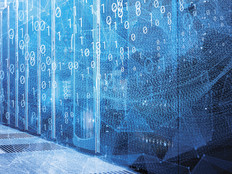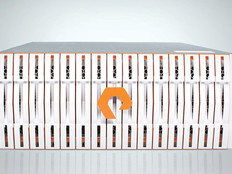5 Easy Power Managmeent Tips
Cutting back on energy costs is like cutting back on junk food. By now, most of us know we should, and we know we'll pay sometime down the road if we don't, but it's still easier to talk about than to take action on.
In the case of computers, the solution isn't as challenging as it may seem. Amid the endless advice about green IT, such as server consolidation, duplex printing, smart power strips, data center airflow management and so on, one idea stands out as simple, inexpensive and effective: client power management.
The IT staff at the University of Maine at Farmington (UMF) has explored many aspects of energy efficiency, and we've found that changing power settings on computers lives up to its reputation for ease and savings. Our recommendation for staff and students alike is to set their computer display to go into low-power sleep mode after 15 idle minutes, and for the computer itself to go to sleep after 30 minutes. We deploy these settings on new computers, offer easy opportunities for staff and students to change settings on their own, and promote the message of green computing at every opportunity.
These efforts have contributed to a 33 percent reduction in energy consumption in our computer center (where most lab computers are located) and a 2 percent decrease campuswide. We're a relatively small school, with 2,000 students and 400 employees; even so, we estimate the direct savings from power management at roughly $17,000 per year.
Our drive to save hasn't just paid off financially. It also helped the university win a nationwide contest called "Power Down for the Planet" in 2009. The challenge was to convince college staff, faculty and students to enable the power-save features on their computers. UMF gathered about twice as many pledges as the second-place school.
In a conversation with the contest's organizers afterward, we learned how our approach differed from that of the competing colleges. While most relied on nontechnical sustainability or public relations staff, UMF asked the computer center to lead the charge, with help from a coalition of students, faculty and staff. This cooperative strategy produced high levels of participation and enthusiasm campuswide, not just for the contest, but for efficiency in general. And the involvement of technical staff ensured that we implemented the changes instead of just talking about them.
Here are some of the power management best practices the University of Maine at Farmington has learned along the way.
Take an inventory. Client power management is the most important and probably the easiest and least expensive step an organization can take to cut energy costs. First, find out where power management is most needed. How many computers are there? What level of control do you have over them? What's the breakdown of notebooks versus desktops? Which computers are on for hours, and which could spend more time shut off?
At UMF, we added up staff, student and lab computers, then divided those into notebooks and desktops. We estimated how many hours per day and days per year each was likely to be powered on, then multiplied that by typical computer kilowatt-hour (kWh) usage rates to find out how much they cost to run.
Hit the biggest targets first. Once we knew where all the power was going, we knew where to start our efforts. In our case (and it's probably true at many other schools), the worst offenders were the lab computers. They're desktop computers, which use more electricity as a rule, and they were more likely to be left on all day – or worse, all night, through the weekend and sometimes over vacations.
At the other end of the scale, though student computers outnumbered those used by staff or labs, students mostly use notebooks, which are three or four times more efficient than desktops. After factoring in the logistical and political challenges, we decided that requiring settings on student notebooks didn't make sense.
Make it easy to get involved. Completely ignoring student computers is like leaving money on the table. That's why UMF invests equal time in promoting the idea of efficiency, using electronic media such as Facebook and electronic mailing lists, as well as proven classics such as bulletin board fliers and the campus newspaper. Then we follow up by offering simple ways to change settings voluntarily. For example, the automatic registration process for student computers includes a simple opt-in utility that touts the benefits of power management and lets users change settings with the click of a button.
Rather than demand that staff and faculty use power management, we've run a similar utility in employee login scripts and have seen widespread participation.
Making it optional yet attractive has not only produced results, it has made green IT a cause for everyone on campus (and not just for our computer center).
Get out the calculator. Tallying the organization's power-saving reward is simple in theory: Just multiply the average savings by the number of computers. However, check 10 websites and more than likely there will be 10 different estimates on how much money power management saves per computer. The numbers generally range from $10 to $100 per year – more for desktops, less for notebooks.
Rather than guess, plug some of the college's typical computer models into an inexpensive watt meter and let them run for a typical day. This will demonstrate how many kWh the computers consume. Then multiply those amounts by the kWh rate on the electric bill to find the actual dollar costs.
Question the need for a managed solution. For more exact numbers about savings, try an enterprise power management product; for example, Faronics Power Save. Depending on scale and usage patterns, this option can pay off big time, but it may make more sense for a business than for an educational institution.
Because the largest share of computers on our campus are student notebooks that we have little control over, we weren't interested in software with a client component.
Even if we could measure student use accurately, forcing them to change would be unpopular and technically demanding. Furthermore, because the top power-hungry culprits were lab computers and we could easily change their power settings, it didn't make sense to pay for managed software. Labs aside, it has proved more effective to allow choice, albeit with targeted lobbying and one-click power changes as encouragement.

Photo: Tetra/Glow Images
Power Tools
Check out these websites to learn more about power management:
The Energy Star site offers a thorough and objective overview of computer power management, with free online training, certified product databases, case studies and lists of free and commercial software options. Energy Star even offers free consultation to organizations that pledge to use power management.
Energystar.gov
Faronics provides an elaborate savings calculator that accounts for usage patterns.
faronics.com/enterprise/power-save
Learn what it costs to run your computers with this analysis of how many watts computers use for different tasks.
michaelbluejay.com/electricity/computers.html







